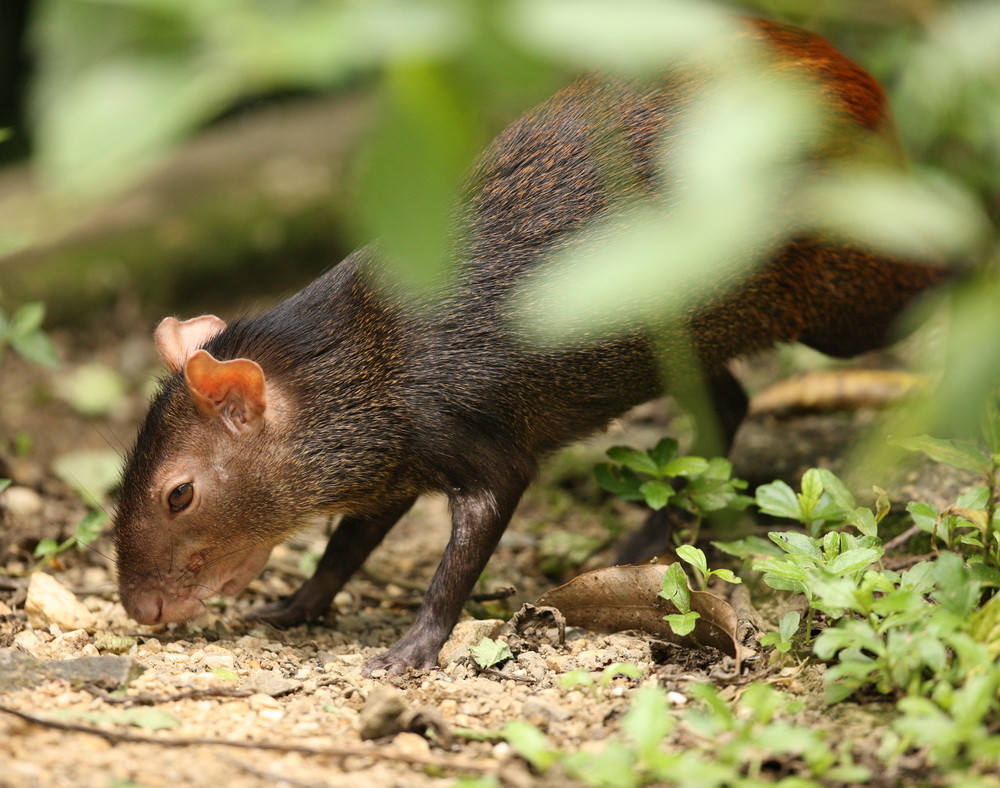

Mammals of Neotropics: Ecuador, Bolivia and Brazil. "The agouti Dasyprocta leporina (Rodentia: Dasyproctidae) as seed disperser of the palm Astrocaryum aculeatissimum". ^ Pires, Alexandra Galetti, Mauro (December 2012).^ a b "Dasyprocta leporina (Red-rumped Agouti)" (PDF).DIET IN THE WILD Fruit, nuts, shoots and leaves IN THE ZOO Fruit, vegetables, seeds and nuts. ^ "The Online Guide to the Animals of Trinidad and Tobago" (PDF). Red-rumped agoutis are found in tropical and dry forests of Central and South America.We didnt see the Ocelot, but we did see the Agouti shown here every day we were there. Mammal Species of the World: A Taxonomic and Geographic Reference (3rd ed.). A night camera research project at the Asa Wright Center captured a lot of nocturnal animals including the Ocelot. They are known to feed on and disperse Astrocaryum aculeatissimum seeds, as well as Hymenaea courbaril seeds. They also feed on insect larvae when plant resources are low. It lives 15-20 yrs in captivity.įood mostly consists of seeds, pulp, leaves, roots and fruits. They have coarse, glossy fur that is typically brown, with orange to red fur on their rumps, and a little tail no longer than 6cm. They need large areas for food, breeding, and territory because of this, keeping them in captivity is difficult. According to the Cango Wildlife Ranch, they are similar in appearance to Guinea pigs, only larger and with longer legs, Red Rumped Agoutis are members of the rodent family. The species is native to South American especially the north Amazon countries. They live in pairs or family groups of the parents and babies. The Red-rumped Agouti (Dasyprocta leporine) is locally known as the Akuri in Guyana. On average, it takes 20 weeks for the young to be weaned. They have no distinct breeding season, but females come into season twice a year and generally have one to four young. They can be distinguished from other agoutis by their distinct coloring. The front feet have four toes and the back have three each. The fur becomes more orange as it goes past (going down) the middle area of the animal. The coat is coarse and glossy, and the coloration is brown to black with a yellow to white under belly. Although their ears are small, they have excellent hearing. Their long legs are adapted for fast running. They are brownish with darker spots on the upper body. Red Rumped Agoutis are approximately two feet long, with a short tail, and weigh 4 to 5 pounds. The females are larger than males but otherwise look similar. They are about 19 to 25 inches (48 to 64 cm) long. Red-rumped agoutis weigh about 3 to 6 kilograms (6.6 to 13.2 lb). We concluded that structural characteristics are similar to other mammals, although the morphology of agouti's palate differs in the amount and disposition of palatine ridges, and the conical CTC's morphology.Captive specimen at Henry Vilas Zoo in the United States The structural and ultrastructural characteristics enable stability of the hard palate and fixation to the soft palate sides, while the soft palate center has greater mobility thus assisting in food swallowing. Near the CTCs were nerve fibers in the hard palate, and the soft palate had muscular tissue below the gland clusters. Epithelial removal revealed CTCs with a conical shape with high density in the hard palate and the sides of the soft palate. Stratified squamous keratinized epithelium with projections of lamina propria and soft palate had gland clusters. We found nine palatine ridges in the diastema and hard palate, and a smooth surface in the soft palate. This research aimed to describe structural and ultrastructural characteristics of the palatine epithelium and the connective tissue cores (CTCs) of ten red-rumped agoutis ( Dasyprocta leporina-Linnaeus, 1758) using macroscopic, light microscopy, scanning electron microscopy, and transmission electron microscopy. The palate is a fundamental region in food swallowing and presents different adaptations in species.


 0 kommentar(er)
0 kommentar(er)
